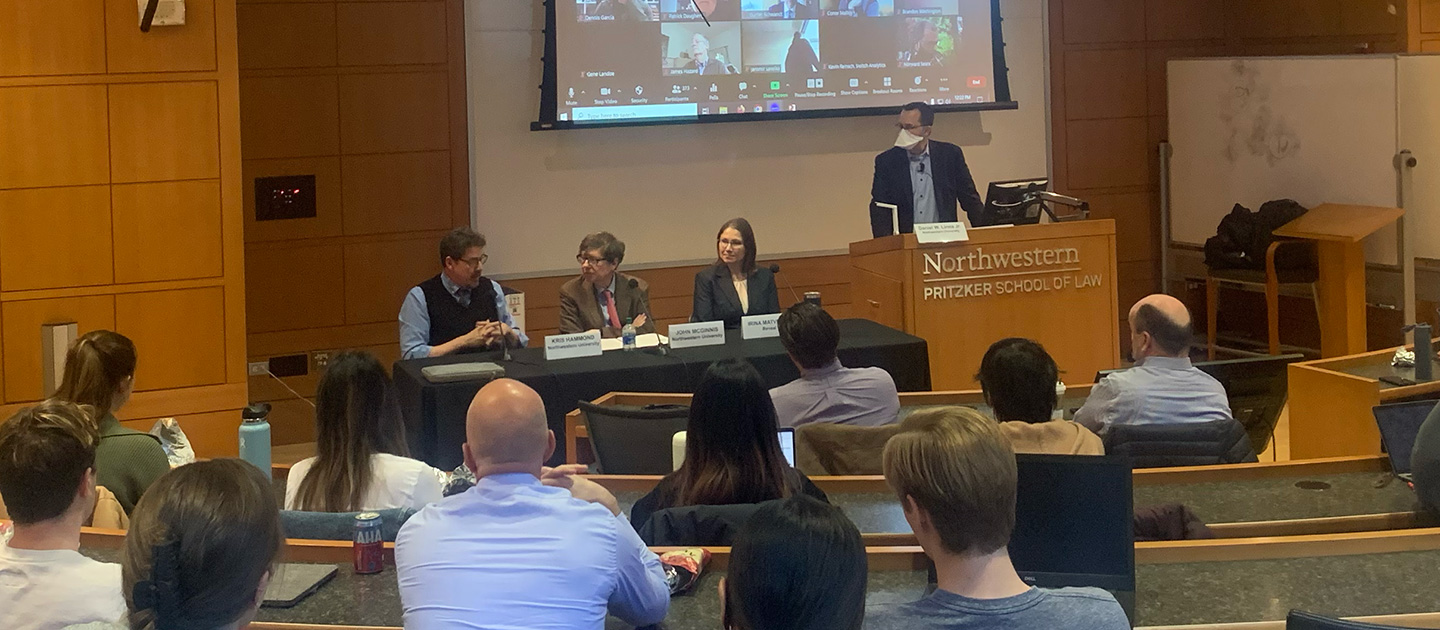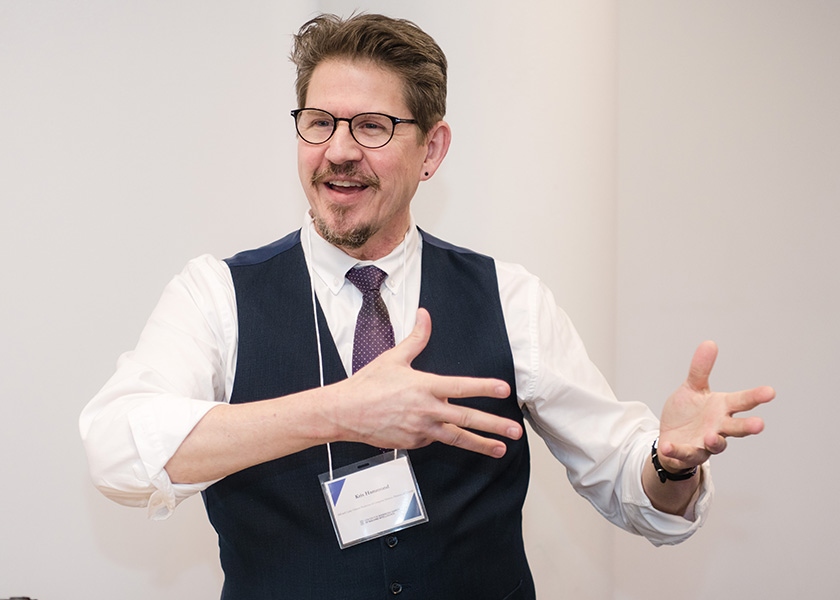 Events
EventsHow ChatGPT Could Impact Law and Legal Services Delivery
Panelists considered the potential and limitations of ChatGPT

Since launching in November 2022, OpenAI’s ChatGPT (Generative Pre-trained Transformer) has transformed our understanding about what is possible with artificial intelligence (AI). The conversational chatbot can perform a range of human-like tasks with ease, such as writing and debugging code, composing lyrics, writing in the style of a specific author, and answering test questions.
ChatGPT has also reinvigorated discussions about the transformative use of AI in professional spheres including law and legal services delivery. Can ChatGPT aid lawyers in drafting contracts and briefs? Is ChatGPT equipped to offer reliable legal advice? Long-term, could tools like ChatGPT replace some lawyers entirely?
The Northwestern Law and Technology Initiative – a partnership between Northwestern Engineering and Northwestern’s Pritzker School of Law – and Northwestern Law’s High Tech Law Society convened a panel on January 10 to discuss these questions and consider the opportunities and limitations of large language models.
Northwestern Engineering’s Kristian Hammond, Bill and Cathy Osborn Professor of Computer Science and director of the Center for Advancing Safety of Machine Intelligence (CASMI), joined panelists John McGinnis, George C. Dix Professor in Constitutional Law at Pritzker; and Irina Matveeva, chief of data science and head of machine learning at Reveal.

“Computational technologies are being used to augment and automate a range of legal tasks, such as drafting and reviewing contracts, drafting legal briefs, and providing legal guidance to businesses and individuals,” Linna said. “In addition to offering educational opportunities and training for lawyers, legal professionals, and students, we are doing research and development to help guide the use of these technologies so that they can fulfill their potential to improve legal services and increase access to justice.”
Language model fundamentals
ChatGPT is built on top of OpenAI’s GPT-3 large language model, which uses deep learning to predict language and the structure of language and generate text from a given prompt that mimics the way humans speak and write.
Hammond explained that ChatGPT is a statistical model that provides controls through the user’s ability to both craft prompts and to regulate variability — the degree to which the bot generates the most or less likely next word in the sentence. Users can control ChatGPT output from a stylistic point of view and how variable it is from prompt to prompt.
“People often think it’s being very creative, but it’s just doing what it’s told,” said Hammond, who also directs Northwestern’s Master of Science in Artificial Intelligence (MSAI) program. “The power is in its ability to process the prompts and to use the things that it has said before and the things you've asked it to do as input. The use of context has been amplified in the ChatGPT model.”
Matveeva noted that the training approach in developing ChatGPT incorporated reinforcement learning with human inputs to better align the dialogue to human expectations and intentions.
“That's what makes it so much more believable,” Matveeva said. “And that's why we don't see the limitations right away.”

Limitations
Illustrating ChatGPT’s limitations, Hammond described how he prompted ChatGPT to generate a description of the MSAI program. The bot response skewed toward the norm by incorrectly stating that MSAI is a two-year degree program — the program is 15 months. This error is an example of bias, or an erroneous assumption, based on ChatGPT’s training data. The bot also omitted unique information about the program, namely MSAI’s industry partnerships.
“When you are looking for an answer that is best practices or conventional wisdom, those are marvelous places for statistical methods,” Hammond said. “But if you start wandering into the realm of the bespoke, or the unique, you’ll run into problems.”
Hammond stressed the importance of understanding the nature of a task and confining technologies to the tasks they were built to solve. He suggested a language model like ChatGPT might not, for instance, be suited to the task of determining how changing a clause in a contract will impact the document.
“You have to understand the length and breadth of the technology and where it collapses, and make sure the task is not one that demands something beyond its limits,” Hammond said. “ChatGPT might be good at taking a test. But, because of the nature of the underlying mechanism, it may never be capable of genuine reasoning, being imaginative, or thinking beyond the moment.”
Implication for law and legal services
McGinnis discussed his expectations regarding how computational technologies like ChatGPT may affect legal services and law, including increasing efficiency, improving accuracy, and reducing costs.
He suggested that certain areas of law that are more conservative and stable over time, like trust law, might be more readily impacted by the technology than edge cases and law that is rapidly changing, like cybersecurity.
“I don’t think, at least in the foreseeable future, that AI tools will make lawyers obsolete. But they will be very important helpmates, as we have already seen with e-discovery and computerized legal search,” McGinnis said. “The question for lawyers and law students will be, how are you going to add value in a world where some of the simpler tasks are going to be taken away by machines?”
Looking ahead
The panel agreed that, in the next five to 10 years, iterations of ChatGPT will focus on specialized domains — LawGPT, MedicineGPT, MarketingGPT — underscoring the issues around the need to evaluate, validate, and test the bot’s output given that, unlike search results, it is not feasible to see ChatGPT’s sources or citations.
Hammond predicted, in the short-term, a new “prompt engineer” role will emerge to improve the system and refine for specificity.
“Users who understand enough about a domain will engineer the appropriate prompts to guide the system in the right direction, and the prompts will become the learning driver for the next generation,” Hammond said. “Learn to communicate at the level of the goals that you're trying to achieve, because that is the language that you're going to use to control these systems.”